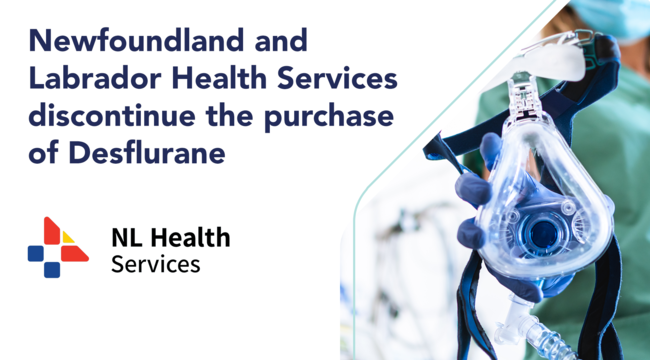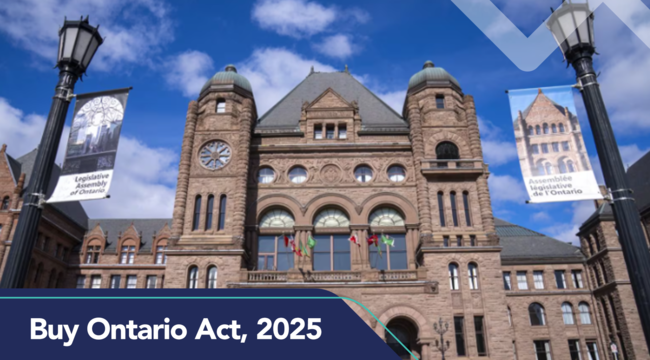HealthPRO Canada News
February 24, 2021
Go big OR stay home?

A year ago, the average citizen could not tell you what PPE was or what those initials meant. Today the term comes up even in water cooler conversations. It is not just the everyday person who talks about PPE. It has become an important discussion for governments and businesses in Canada. Strategic decisions on where, how and from who, we should get our PPE have been an important thread in our fight against COVID-19.
HealthPRO has been working with existing suppliers to ensure we secure supply for our members and we are also working to assist a whole new brand of domestic manufacturers to seek their place in the PPE supply nationally.
At this time last year, many of us in healthcare were scrambling to secure supplies of masks, gowns, swabs, shields and other PPE as was most of the planet. Healthcare executives and politicians were receiving daily emails of leads on cargo loads of PPE miraculously being secured and available. Unfortunately, many of these leads were from fly-by-night opportunists. These leads often had a sad ending. Often, we discovered deficient or non-existent product was the stark truth.
Then there were some real local heroes who genuinely wanted to re-tool and help out in domestic production. Governments were rightly shaken by the realization of our dependence on offshore suppliers. We even saw our friends in the US, through actions by organizations like the Federal Emergency Management Agency (FEMA), re-directing and seizing shipments that ordinarily were bound for Canada. States were even battling states outbidding each other for shipments. Vows were made to never be solely reliant again on non-domestic supply.
The Provinces and the Federal government have helped spur local production initiatives that will mitigate our risk in the future. However, now we have some re-positioning to do to ensure these investments remain viable.
“French mask producers seek protective shield once pandemic over”
Today I saw this Reuters headline. It reflects the reality of how we need to think through how to ensure investments made in domestic supply of PPE (and any other new local supplier of healthcare-related supplies) remain viable.
This story probably is occurring in many jurisdictions. Nizard is a start-up in France of “Le Masque Francais”. They employ 50 staff and churn out one million masks per week. The entrepreneur, Emmanuel Nizard, who started the company, made a two million euro bet last year that President Emmanuel Macron’s call for France to manufacture the face masks it needed would guarantee a secure market.
Today he told Reuters the industry would be left fighting for its survival once demand for masks fell. According to Reuters, Nizard was quoted as saying, “Companies that launched production will be confronted by Chinese masks that are unbeatable in terms of price.”
Nizard and other new Western manufacturers are facing two challenges. First, he is right that on outright costs, driven primarily by labour, masks made in France cost about 0.10 Euro compared to an offshore mask in China (of legitimately comparable quality) cost of 0.06 Euro. The second challenge is that the pandemic sprung up a five-fold increase in start-up suppliers. Not all of these suppliers will survive domestically.
At HealthPRO we are very supportive of finding ways to bring in local suppliers while still ensuring the global players, who we will always need, have access to our markets. In one report by the Allam Advisory Group, it predicts the domestic mask market to grow to $3.5-billion over the next 12 months. We also see our regional partners and members looking to understand how to incorporate more local suppliers.
In a pandemic, where a state of urgency and short supply is the context, we all do what we have to do to keep our communities safe. However, we need to work on the sustainability of these investments if we want to preserve a nascent domestic industry.
As demand evens out, even with a permanent new market in non-medical (i.e. consumer market) applications, we will experience challenges. Global capacity is also coming online with companies of significantly bigger scale. Capital investments needed to continue being competitive will put pressure on our domestic manufacturers.
This is where we need to link economic policy with pandemic policy. This is where we decide if we “go big or stay home”. On the one hand we could protect our local manufacturers, probably pay a subsidy on product, and ensure local supply. However, this creates two challenges for us.
One is that overall Canada’s growth depends on our ability to export product and services. It is challenging to protect our local markets while calling out local jurisdictions for locking out Canadian manufacturers and companies from their markets (and we will not even get into the complexities of World Trade Organization type of trade issues). So merely putting protectionist “buy local” provisions will be problematic. We need to go further.
The second problem is the opportunity cost of not actually creating globally competitive companies. Duplicating capabilities to produce what offshore companies can do more cheaply risks us missing out on not creating innovative and more sustainable Canadian companies that can compete on a global scale. So, we are left with the question of “Go big, or stay home?”
We should seek to leapfrog the generation of PPE and infection control devices and create manufacturers that sell better and safer PPE. This will require investment in research and innovation. The federal government has already started this, but we need to encourage the investment to create long-term value not just replacing the PPE stock of today.
At HealthPRO we already have a mechanism to do Multi-Supplier Awards that allow big and smaller suppliers to co-exist. Canada’s share of healthcare supplies is too small to risk further reducing interest from global players that we rely on to bring innovation into our system at prices of scale even where our spend is small compared to global markets. However, that does not mean we cannot pick our spots for domestic suppliers who can compete.
We also are reaching out to regional partners to see how we can expose new players not just to their local market but to a national market. We want to see the best of regional manufacturers grab parts of national supply contracts. It is a start to help them scale out and become bigger and potentially international. At minimum we can seek to be at least competitive against North American supply chains.
We want our Canadian suppliers to not just be around for the pandemic, but to thrive and prosper in “normal” times. The best way to ensure we never get caught by lack of domestic supplies is to make sure we have sustainable capacity that generates excellent products at reasonably competitive prices. We firmly believe we can increase local sourcing and still get globally competitive products. We should not have to choose between cheaper offshore products or ensuring better local supply. We have to have both if we are to have a viable healthcare system and protect our communities.
We can go big and not just stay home.


